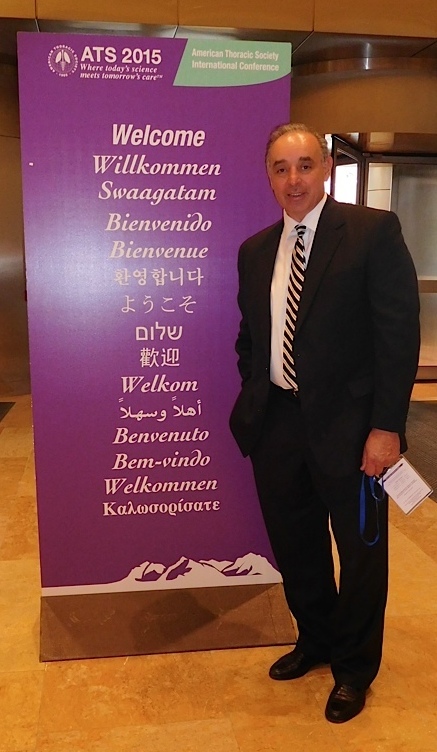We are really proud of the work we do at S3DC® and especially encouraged to have had Dr. Marc invited to present on idiopathic scoliosis and pulmonary function at a workshop at the American Thoracic Society International Conference 2015 in Denver this past Monday. The invitation is a testament to the inroads he’s helped forge here in the U.S. regarding nonsurgical adolescent idiopathic scoliosis treatment. It is also a credit to the forward thinking doctors who extended the invitation – Dr. Carolyn Rochester of Yale University and Dr. Howard Panitch of Children’s Hospital of Philadelphia.

The workshop included five international presenters who are all committed to improving the lives of adolescents with conditions threatening pulmonary function such as cystic fibrosis, pulmonary hypertension, tuberculosis and scoliosis. Attendees of the workshop should be praised for their open-mindedness and wilingness to consider non-traditional treatment approaches.
Dr. Marc’s presentation focused on reasons and benefits of improving pulmonary function for adolescent idiopathic scoliosis patients. He emphasized that the key to scoliosis management in the short and long term is mobilization and derotation of the ribcage, chest cavity and spine. His powerpoint included a video clip demonstrating Schroth breathing and an explanation of its role in pulmonary rehabilitation of scoliosis. Similarly, Dr. Marc indicated how Cheneau style bracing (with its voids for breathing) is Schroth compatible and how it can potentially contribute to the improvement of scoliosis. The presentation was well received and hopefully we will soon have a link from the ATS to post. If not, we will recreate the presentation and post the video to YouTube in the coming weeks.
Dr. Marc noted that it was interesting that presenters with inpatient programs for adolescents with TB and CF from Europe and Australia also used an immersion therapy approach, similar to how we treat our patients at Scoliosis 3DC®. When treating scoliosis, it has been our experience that the German model of immersion care works best. This is why our back school incorporates that treatment format, mimicking inpatient rehabilitation while still providing the convenience of short-term outpatient treatment. This model of care allows us to focus on optimal outcomes and patient success and it was interesting to learn of others who are successfully addressing scoliosis and pulmonary function in a similar manner.

